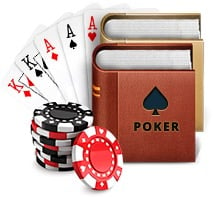Sit and Go Strategy Guide

If you love the intensity, grit, and pace of traditional tourneys but don’t like making scheduling commitments, Sit and Go tournaments deliver with little compromise. Not only will you get to start playing as soon as the seats are filled, but you’ll find Sit and Gos in a wide range of formats, stakes, and sizes. Sit and Go tourneys are great for beginners, giving anyone a legitimate shot at a big prize without much risk. Learn how easy it is to dive right in and succeed using our Sit and Go strategy guide and tips.
Sit And Go Tournament Structure
While Sit N Go tournaments can have anywhere between 2 and 990 players, this introductory strategy guide addresses single table tournaments. You’ll find a separate multi-table tournament strategy guide, which better represents the play you’ll experience during larger Sit and Go tournaments.
Money Matters
Many new players assume that tournaments are little more than a series of cash games strung together. As you’ll discover, that’s entirely untrue. Sit and Go tournaments are about long-term success. Chips effectively become more valuable as you eliminate players and you’ll need enough of them to overpower your opponents, forcing them to fold.
Sit and Go Strategy At A Glance
- Although not a marathon, you’ll need to pace yourself.
- Chips effectively become more valuable over time.
- Only play great hands from good positions early in the game.
- Let your opponents attack each other.
- Get more aggressive as players are eliminated and blinds increase.
- Aim to keep your stack competitive so you aren’t forced to make bad decisions.
- Remedy a low chip count ahead of the bubble by being more aggressive.
- Play loose and aggressive before the flop late in the game.
- Don’t be afraid to call all-in bets at the final stages.
You’ll need to survive if you want to cash and ultimately be in a position to win. How you achieve that depends on the number of players and how quickly the blinds escalate. The simplest overarching strategy is to turn every tournament into a story with a distinct beginning, middle, and end.
Early Game Strategy
No matter how many players are at your table, you’ll generally need to play tight. Here’s an analogy for you. Treat the early stage of the game as if your boat has capsized out at sea. Your survival in the short term depends on your ability to tread water. Your chip gains aren’t going to get you significantly closer to the shore. Yet if you lose too many chips you will drown. Sit back and watch your opponents duke it out. Only play premium hands from good positions. Stick to raising when you land a pair of queens or better. Generally sit back, relax, and assess your opponents. Watch the aggressive ones eat each other alive and fly under the radar.
Middle Game Strategy
After the blinds increase a few times and your opponents become railbirds, you’ll need to get more aggressive. The moves you make here are largely dependent on how many chips you have. If you have a healthy chip count lead, the power is in your hands. You can watch your opponents feast on each other and scavenge on the eventual remains or you can prey on the players who have few chips. The former is safer but both strategies are effective.
If your chip count is poor midway through the game, you’ll have no choice but to make a move. The escalating blinds can deplete your few chips in short order and simply treading water won’t save you when a tsunami is coming. If you have most of your original chips, your aim should be to keep your stack competitive. You need to put yourself in a pay to play position where you can afford the blinds and flexibility to make your own decisions.
Bubble Strategy
When the bubble bursts all remaining players are guaranteed to be paid. How you play at the bubble will influence whether you’ll be rewarded or have simply wasted your time. At this stage of the game, the first player to bet tends to take the pot more than you’d expect. Keep track of your opponents chip stacks and realise their moves are based more on being in the money than the quality of their hands. All-in bets with a poor chip count are usually a sign of bluffing. Obviously you want to be around after the bubble has burst but you clearly aren’t the only one.
Late Game Strategy

Now that all players stand to win something, you’ll need to shift gears to accommodate the huge blinds. Prepare to be looser and more aggressive overall, which is what your opponents will be doing as well. Even a lowly pair, a couple of face cards, or a lone Ace are worth playing from any position. Don’t be afraid to call all-in bets when your hand is even half decent. As a rule of thumb play loose and aggressive before the flop and increase that aggression after the flop unless your opponents are already aggressive. Naturally you’ll need the hands to back it up.
Like in most tournaments, the end game is a matter of reading your opponents and pure luck of the draw. Keep in mind that your opponents, especially if they are any good, will play like chameleons too. If you’ve ever watched poker on TV, you know that anything can happen in the end even when professionals are involved. Just remember it’s better to be the aggressor than the victim. There will be force involved, at least metaphorically.
Why Play Sit And Go Tournaments?
- Great training for scheduled tournaments
- Perfect compromise between cash games and landmark MTTs
- Great for experiencing tournament action without the wait
- Available for all popular poker variations
- Low risk with potentially high payout even for new players
- Offered for every budget and in a variety of formats






